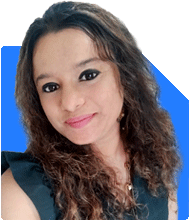Ramalingam Kalirajan |10879 Answers |Ask -Follow
Mutual Funds, Financial Planning Expert - Answered on May 22, 2024
He has an MBA in finance from the University of Madras and is a certified financial planner.
He is the director and chief financial planner at Holistic Investment, a Chennai-based firm that offers financial planning and wealth management advice.... more

I am 33 years old and earning 1.5L per month. I have personal loan of emi 46k and car loan of 22k per month. I have started an SIP of 10k per month and I do have 2 LICs around 70k per year. As of now I don't have any savings and most of my salary is going to these emis credit card bills. I need help in better financial planning and save at least 1CR in next 10 years. Pls suggest.
Current Financial Snapshot
Firstly, let's assess your current financial standing. With an income of 1.5 lakhs per month, you're earning a decent salary. However, your EMIs for personal and car loans are consuming a significant portion of your income, leaving little room for savings. It's essential to address this imbalance to pave the way for wealth accumulation.
Debt Management Strategy
Your priority should be to reduce high-interest debt. While EMIs are essential commitments, consider evaluating options to refinance or consolidate your loans to lower interest rates. This would alleviate some financial burden, allowing you to allocate more towards savings.
Optimizing Expenses
Review your expenses meticulously to identify areas where you can cut back. Analyze your monthly spending patterns and distinguish between essential and discretionary expenses. Trim unnecessary costs and redirect those funds towards debt repayment and savings.
Emergency Fund
Building an emergency fund is imperative to handle unexpected expenses without resorting to additional borrowing. Aim to set aside at least 3 to 6 months' worth of living expenses in a liquid, accessible account. This fund acts as a financial safety net during unforeseen circumstances like medical emergencies or job loss.
Strategic Investment Approach
Your SIP and LIC policies are steps in the right direction, but optimizing your investment strategy can yield better returns. Instead of solely relying on LIC policies, explore diverse investment avenues tailored to your risk appetite and financial goals. Consider diversified mutual funds managed by seasoned professionals to maximize growth potential.
Retirement Planning
It's never too early to plan for retirement. Allocate a portion of your savings towards retirement accounts like EPF or PPF, which offer tax benefits and long-term growth potential. Additionally, consider investing in retirement-focused mutual funds to build a robust corpus for your golden years.
Wealth Creation Roadmap
To achieve your target of 1 crore in 10 years, you'll need a disciplined approach to wealth creation. Calculate the monthly savings required to reach this goal, factoring in inflation and investment returns. Adjust your budget accordingly to ensure you're consistently contributing towards your financial objectives.
Regular Financial Reviews
Periodic reviews of your financial plan are essential to track progress and make necessary adjustments. As life circumstances change, your financial strategy should evolve accordingly. Consult with a Certified Financial Planner regularly to fine-tune your plan and stay on course towards your wealth-building goals.
Conclusion
In conclusion, by adopting a strategic approach to debt management, expense optimization, and diversified investments, you can pave the way towards financial freedom and achieve your goal of saving 1 crore in the next decade. Remember, consistency and discipline are key ingredients for success on this journey to wealth creation.
Best Regards,
K. Ramalingam, MBA, CFP,
Chief Financial Planner,
www.holisticinvestment.in
You may like to see similar questions and answers below
Ramalingam Kalirajan |10879 Answers |Ask -Follow
Mutual Funds, Financial Planning Expert - Answered on Jan 31, 2025
Ramalingam Kalirajan |10879 Answers |Ask -Follow
Mutual Funds, Financial Planning Expert - Answered on May 29, 2025
Ramalingam Kalirajan |10879 Answers |Ask -Follow
Mutual Funds, Financial Planning Expert - Answered on Jun 20, 2025
Ramalingam Kalirajan |10879 Answers |Ask -Follow
Mutual Funds, Financial Planning Expert - Answered on Jun 24, 2025
Jinal Mehta | Answer |Ask -Follow
Financial Planner - Answered on Jun 27, 2025
Mayank Chandel |2572 Answers |Ask -Follow
IIT-JEE, NEET-UG, SAT, CLAT, CA, CS Exam Expert - Answered on Dec 11, 2025
Mayank Chandel |2572 Answers |Ask -Follow
IIT-JEE, NEET-UG, SAT, CLAT, CA, CS Exam Expert - Answered on Dec 11, 2025
Ramalingam Kalirajan |10879 Answers |Ask -Follow
Mutual Funds, Financial Planning Expert - Answered on Dec 11, 2025
Samraat Jadhav |2507 Answers |Ask -Follow
Stock Market Expert - Answered on Dec 11, 2025
Samraat Jadhav |2507 Answers |Ask -Follow
Stock Market Expert - Answered on Dec 11, 2025
Samraat Jadhav |2507 Answers |Ask -Follow
Stock Market Expert - Answered on Dec 11, 2025
Samraat Jadhav |2507 Answers |Ask -Follow
Stock Market Expert - Answered on Dec 11, 2025
Dr Nagarajan J S K |2577 Answers |Ask -Follow
NEET, Medical, Pharmacy Careers - Answered on Dec 10, 2025
Mayank Chandel |2572 Answers |Ask -Follow
IIT-JEE, NEET-UG, SAT, CLAT, CA, CS Exam Expert - Answered on Dec 10, 2025
Samraat Jadhav |2507 Answers |Ask -Follow
Stock Market Expert - Answered on Dec 10, 2025












.jpg)













